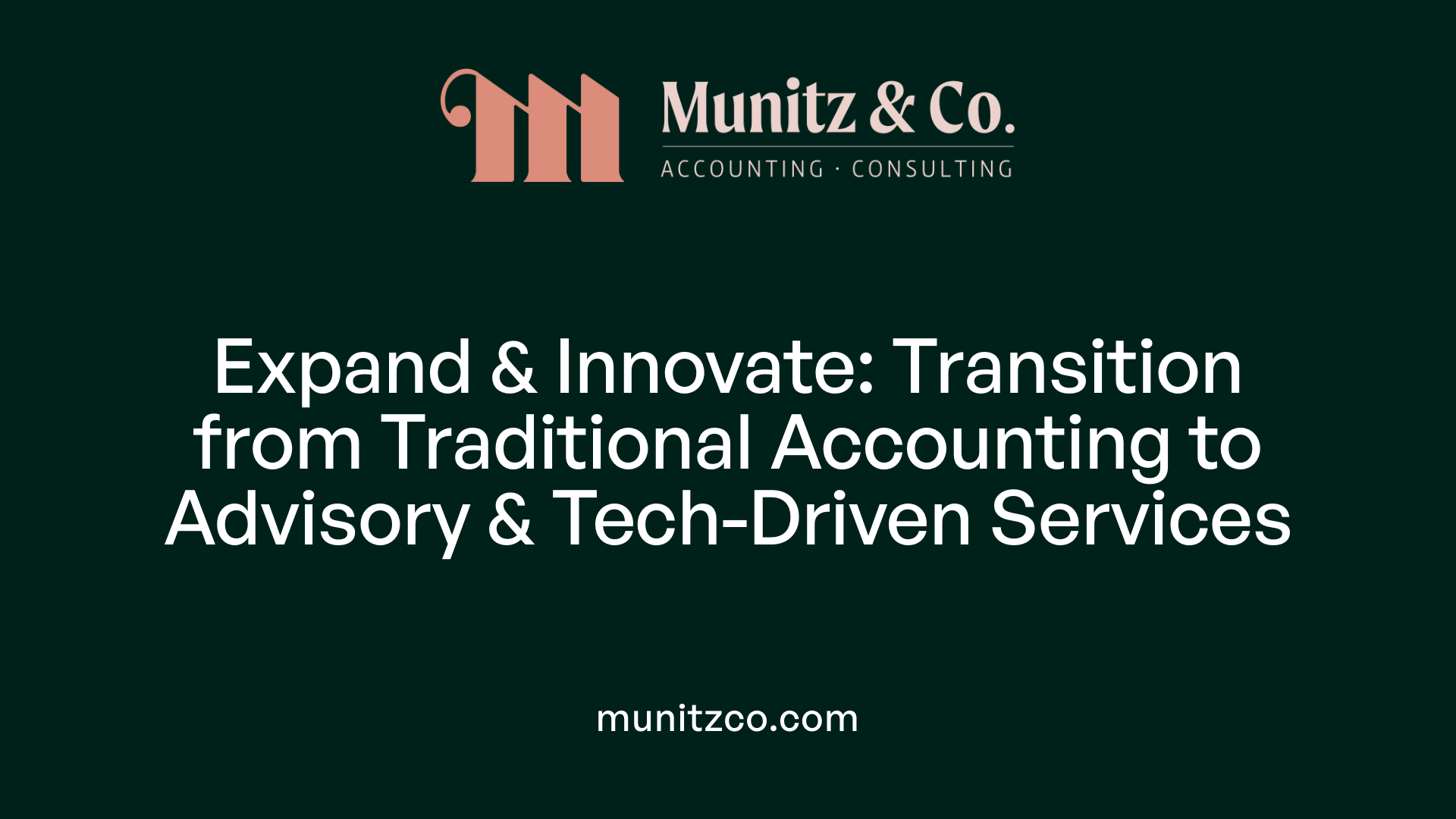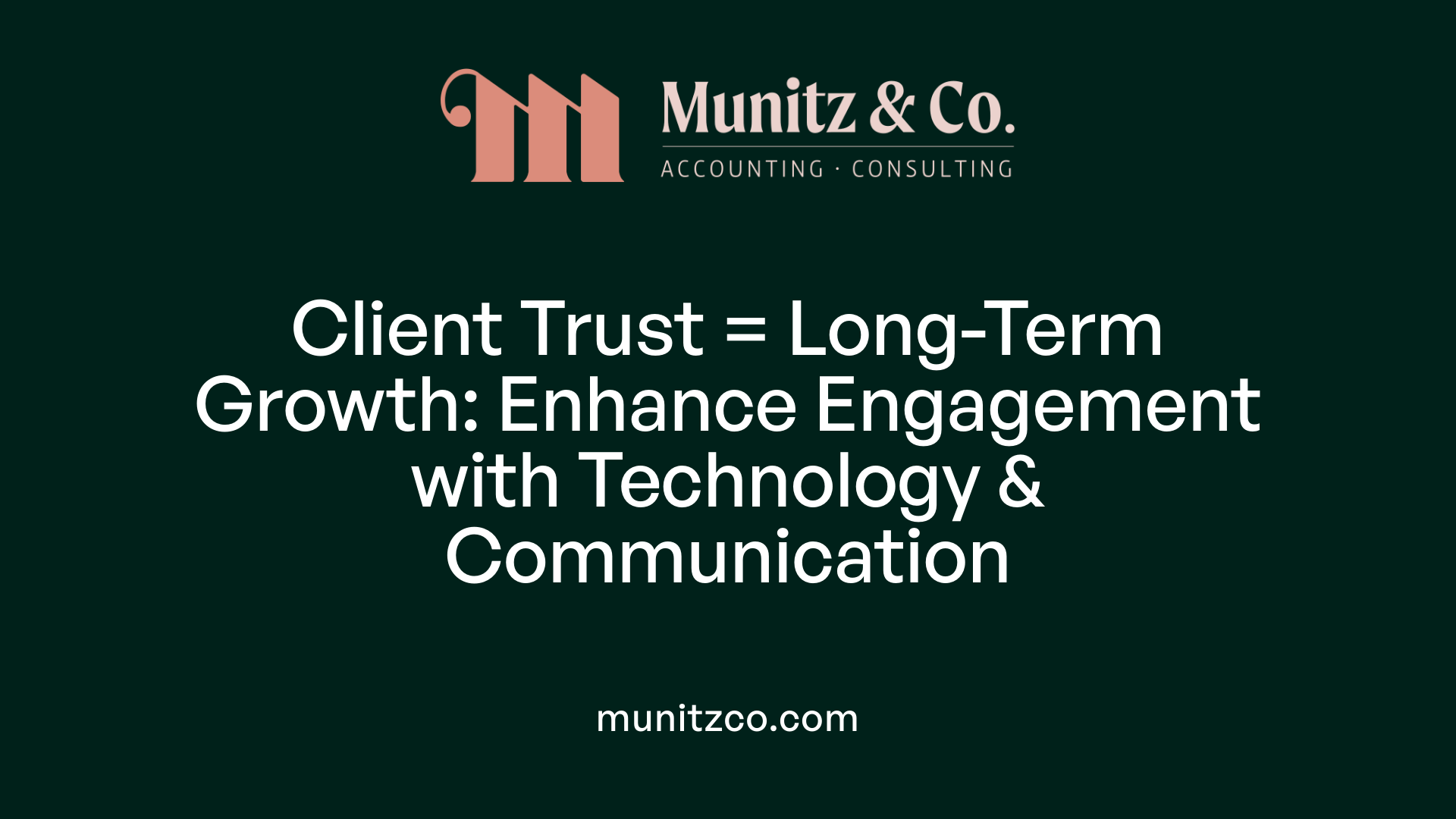Harnessing Numbers to Drive Strategic Growth
In the evolving landscape of accounting and financial services, growth is no longer just about adding clients—it's about smart, data-driven strategies that foster profitability, agility, and sustained expansion. From integrating advanced technologies to refining client retention practices and reshaping organizational structures, firms are transforming how they harness numbers to build stronger growth foundations. This article explores the multifaceted approaches accounting firms are deploying to translate stronger numbers into meaningful, scalable growth.
Maximizing Client Retention for Exponential Profit Growth

Why is client retention important?
Client retention is a critical driver of profitability for accounting firms. Maintaining strong relationships with existing clients ensures steady revenue streams and reduces the costs associated with acquiring new customers. Firms that prioritize client retention build trust and demonstrate value, which fosters long-term loyalty and repeat business.
How does a small increase in client retention impact profits?
Increasing client retention by just 5% can lead to remarkable profit growth ranging between 25% and 95%. This substantial return stems from reduced churn, increased referrals, and more opportunities to upsell value-added services. Even minor improvements in client loyalty can exponentially boost a firm’s bottom line.
What strategies enhance client engagement and personalization?
To maximize retention, accounting firms should focus on regular, proactive communication coupled with personalized service tailored to each client’s unique needs. Utilizing technology tools like CRMs helps manage interactions and automate timely follow-ups. Offering tailored advisory services and engaging clients with educational content or webinars also deepens relationships. Furthermore, emphasizing data security and responsive support builds trust that encourages clients to stay. Together, these approaches create a client-centered experience that drives loyalty and long-term profitability.
Expanding Service Offerings: From Traditional Accounting to Advisory and Technology Integration

Adding advisory services
Many accounting firms are moving beyond traditional bookkeeping and tax preparation to include advisory services. These offerings provide strategic guidance such as tax strategies, financial planning, and decision support. Advisory services typically yield higher profit margins and help firms attract new clients while deepening relationships with existing ones. Despite barriers like lack of expertise or staffing, technology can ease these challenges.
Technology integration
Incorporating technology has become essential for modern accounting firms. Tools such as cloud-based accounting software, AI-powered autonomous ledgers, and automated bookkeeping reduce manual work, improve efficiency, and free up skilled staff to focus on higher-value tasks. Automation can save firms around 10 hours weekly and boost accuracy.
Emergence of cybersecurity and data analytics
With growing data security concerns, cybersecurity offerings have emerged as a new service area firms add to protect client information robustly. Additionally, data analytics helps uncover hidden risks and financial opportunities, empowering better decision-making. These additions meet client demands for advanced, proactive services and differentiate practices in competitive markets.
Shifting client expectations for strategic guidance
Clients increasingly expect accountants to act as strategic partners, providing proactive advice and foresight beyond compliance tasks. They seek firms offering not just numbers but actionable insights and future-oriented planning. This evolution drives firms to develop comprehensive, value-based service packages and adopt tools that support ongoing client engagement and monitoring.
Expanding service portfolios with advisory, technology, cybersecurity, and analytics aligns firms with current client needs, opens new revenue streams, and strengthens long-term client retention.
Strategic Marketing as a Growth Accelerator

Content Marketing and SEO
Creating SEO-driven content such as blogs and thought leadership articles is essential for attracting organic traffic and establishing credibility. Educational content tailored to specific industries draws higher-value clients looking for specialized expertise. Webinars and educational events also showcase expertise and generate quality leads, reinforcing the firm’s thought leadership.
Paid Advertising and Social Media
Digital advertising channels like Google Ads and LinkedIn effectively expand reach and drive new client acquisition. High-growth accounting firms balance their marketing mix with both inbound strategies (SEO, content marketing) and outbound tactics (paid advertising), ensuring broad visibility and targeted lead generation.
Referral Programs
Referral programs remain a vital source of new clients. Combined with community participation and partnership-building efforts, they nurture trust and encourage word-of-mouth recommendations, which are critical for sustainable growth.
Marketing Investment by High-Growth Firms
Firms experiencing rapid growth invest significantly in marketing, allocating over 12% of revenue to these efforts. This investment fuels the development of a robust marketing engine encompassing content creation, SEO, advertising, and referral initiatives to consistently attract and convert prospects.
Use of AI in Marketing Automation
AI-powered tools enhance marketing efficiency through automation of lead nurturing, campaign optimization, and personalized email sequences. Applications such as chatbots, predictive analytics, and AI-generated content enable firms to deliver targeted, timely communications and improve conversion rates, streamlining marketing operations and supporting scalable growth.
Leveraging Technology and Automation for Operational Efficiency and Scale

How Do Automation Tools Like AI-Powered Ledgers Improve Efficiency?
AI-powered accounting tools, such as autonomous general ledgers, can automatically process over 93% of transactions. This capability drastically reduces the manual workload on accounting staff, saving up to 10 hours per week. By automating routine data entry, firms can redeploy skilled employees to higher-value tasks, boosting overall productivity.
What Are the Benefits of Cloud-Based Accounting Software?
Cloud-based software accelerates revenue growth by supporting faster, more flexible operations. It enables remote access, real-time data updates, and seamless collaboration among team members. This technology also supports automated reminders and document uploads during client onboarding, streamlining workflows and improving client experience.
Why Is Standardizing Processes Crucial?
Standardized procedures for month-end closing, tax returns, payroll, client onboarding, and quarterly reporting ensure consistency and high-quality service delivery. This consistency reduces errors and enhances client trust.
How Does Automation Impact Back-Office Tasks and Client Onboarding?
Automation simplifies back-office operations by using cloud tools to handle repetitive activities and data management. This allows firms to increase capacity without proportionally hiring more staff. Additionally, client onboarding becomes smooth through automated reminders, centralized communication channels, and efficient document handling.
What Is the Overall Effect on Firm Capacity and Efficiency?
The integration of automation and cloud solutions significantly expands a firm's operational capacity and service quality. It supports scalability by reducing manual effort, accelerating workflows, and allowing for timely hiring in anticipation of workload peaks. These improvements collectively enable firms to maintain excellence while growing.
Organizational Structures and Leadership in Shaping Growth Trajectories
How are diamond-shaped organizational structures transforming accounting firms?
Many accounting firms are adopting diamond-shaped organizational structures to enhance their growth potential. This model emphasizes a wide base of specialized roles supported by a narrow strategic leadership core. Unlike traditional pyramids, the diamond structure encourages a balance between team specialization and centralized decision-making.
Such a structure supports scalability while allowing firms to maintain quality and operational excellence. Strategic leaders drive vision and growth initiatives, while specialized professionals focus on delivering niche expertise and client service.
What are the role shifts observed in small versus mid-sized firms?
In smaller firms (1-6 people), owners typically manage all strategic decisions directly, wearing multiple hats from operations to client relations. However, as firms grow to a mid-size range (~7-25 people), partners increasingly take on the mantle of business development and growth leadership.
This shift facilitates focus and expertise in expanding the client base and revenue streams, enabling the firm to professionalize and institutionalize its growth strategies. Concentrated leadership in business development often means more deliberate planning and targeted initiatives.
Why are specialized roles and strategic leadership important?
Specialized roles ensure that professionals are deeply skilled in critical accounting areas or emerging fields like cybersecurity and data analytics. This expertise drives client satisfaction and competitive differentiation.
Concurrently, strategic leadership is vital to guide firms through changing market conditions, technology adoption, and expanding service offerings. Leaders set priorities, allocate resources efficiently, and maintain agility amid growth.
How does firm size influence agility and practice excellence?
Research indicates that accounting firms face a decline in agility and practice excellence once they grow beyond approximately 51 employees. Larger size often introduces complexity, slower decision-making, and potential dilution of specialized attention.
Therefore, successful growth strategies balance expanding the firm with preserving nimbleness through structured processes, technology adoption, and clear communication channels. Diamond-shaped organizations help maintain this balance by centralizing leadership while empowering specialized teams.
Growth Through Strategic Partnerships and Mergers
Benefits and challenges of mergers and acquisitions
Mergers and acquisitions (M&A) are a powerful tool for accounting firms aiming to increase size and resource availability. By combining firms, businesses can broaden their client base and access more capital and expertise. However, firms larger than 51 employees often face challenges such as decreased agility and diminished practice excellence. Therefore, strategic planning is essential when pursuing M&A to ensure that growth does not come at the expense of service quality or operational flexibility.
Strategic partnerships for service diversification
Strategic partnerships allow firms to diversify their service offerings and enter new markets without the complexities of a merger. Partnering with complementary businesses—such as technology providers, financial planners, or legal professionals—can broaden capabilities, enhance value to clients, and improve competitive positioning.
Market relevance and cultural fit
The success of strategic partnerships heavily depends on market relevance and cultural compatibility. A partnership should align with the firm’s strategic goals and client needs, ensuring that both parties share similar values and operational styles. This alignment promotes trust, smooth collaboration, and sustained growth.
Collaboration with financial planners and legal professionals
Partnering with financial planners and legal advisors opens pathways to holistic client solutions, combining tax, legal, and financial expertise. Such alliances satisfy increasing demands from clients seeking comprehensive advisory services. By building these relationships, accounting firms can upsell services, improve client retention, and attract higher-value clients.
| Growth Strategy | Opportunity | Potential Challenge |
|---|---|---|
| Mergers & Acquisitions | Increased size and resources, broader market reach | Reduced agility, practice excellence risks over 51 staff |
| Strategic Partnerships | Service diversification, access to new clients | Need for market and cultural alignment |
| Collaboration with Experts | Enhanced advisory capabilities and client value | Coordination across disciplines required |
Through carefully planned mergers and thoughtful partnerships, accounting firms can strategically scale operations while maintaining high service quality and meeting evolving client expectations.
Pricing Models and Financial Management for Sustainable Profitability
Shift from hourly to value-based pricing
Many accounting firms are moving away from traditional hourly billing toward value-based pricing models. In this approach, firms set fees based on expertise, the value delivered, and client outcomes rather than simply time spent. Nearly half of firms now offer value-based pricing for some services, enabling better alignment with client expectations and creating opportunities for higher revenue.
Financial management focusing on pricing and growth
Effective financial management centers on strategic client service pricing and purposeful growth strategies. Firms prioritize setting prices that reflect both market conditions and the quality of their services. Alongside this, deliberate planning for client base expansion and service development ensures steady, sustainable growth. This approach helps firms manage costs, optimize profitability, and reinvest in innovation.
Profit margin benchmarks
The average net profit margin for accounting and related service firms is around 20%. Achieving or surpassing this benchmark often depends on efficient operations, robust pricing strategies, and diversification of service offerings. Incorporating technologies and standardizing processes enables firms to control costs and sustain good profitability levels.
Scalable, subscription-based service models
To promote repeatable revenue streams, many firms introduce scalable services such as automated bookkeeping, virtual CFO offerings, and automated sales tax compliance. These subscription-based models offer predictable income and enhance client retention by providing ongoing support. They combine technology adoption with specialized expertise, creating efficient and profitable service lines that contribute to long-term firm viability.
Utilizing Data Analytics and KPIs to Optimize Growth Strategies
Tracking KPIs like revenue per employee, churn rate, CLTV, CAC
Effective growth in accounting firms hinges on the smart use of key performance indicators (KPIs). Measuring metrics such as revenue per employee helps gauge operational efficiency, while tracking client churn rate reveals retention strength. Client lifetime value (CLTV) estimates the total revenue a client generates, guiding investment prioritization. Meanwhile, customer acquisition cost (CAC) measures the expenses involved in landing new clients, crucial for maintaining profitable marketing.
Role of data analytics in decision making
Data analytics empowers firms to uncover hidden risks and opportunities by analyzing client behavior, financial trends, and operational workflows. This insight supports informed decisions on pricing, service expansion, and resource allocation. Firms that leverage data-driven approaches grow revenue 2.5 times faster by optimizing strategies and enhancing financial management.
Using feedback tools for client satisfaction and loyalty
Tools like ClearlyRated and Net Promoter Score (NPS) surveys offer essential client feedback to identify improvement areas. This proactive approach cultivates trust and loyalty, which directly impact client retention—a 5% increase in retention can boost profits by up to 95%. Regular engagement and personalized service relying on data strengthen these relationships.
Measuring marketing ROI through CRM and attribution models
To maximize marketing impact, firms integrate Customer Relationship Management (CRM) systems with multi-touch attribution models. This combination helps track how each marketing touchpoint contributes to lead conversion and client acquisition. AI-driven analytics further refine campaign efficiency, enabling better budgeting decisions and boosting marketing-attributed revenue.
| KPI / Tool | Purpose | Benefits |
|---|---|---|
| Revenue per employee | Measures productivity and operational efficiency | Identifies capacity improvements |
| Client churn rate | Tracks client retention | Highlights need for better client engagement |
| Client lifetime value (CLTV) | Estimates client revenue over time | Guides marketing and service investment |
| Customer acquisition cost (CAC) | Calculates marketing costs per new client | Optimizes marketing spend |
| Data analytics | Analyzes financial and operational data | Drives better decisions and strategic growth |
| Client feedback tools (ClearlyRated, NPS) | Measures client satisfaction | Enhances loyalty and referrals |
| CRM with attribution models | Tracks marketing touchpoint effectiveness | Maximizes marketing ROI |
Building Client Trust and Engagement as Cornerstones of Growth

How Does Proactive Communication and Data Security Build Client Trust?
Strong client trust begins with proactive communication. Accounting firms that regularly update clients on their financial status, upcoming deadlines, and new service offerings foster a sense of reliability and transparency. Equally important is robust data security, which reassures clients their sensitive financial information is protected against breaches. Together, these practices form a foundation of trust essential for long-term client retention.
How Can CRMs and Reputation Management Enhance Client Engagement?
Utilizing Customer Relationship Management (CRM) systems helps firms maintain detailed client records, track interactions, and personalize communication. This technology streamlines workflows and ensures timely follow-ups, increasing client satisfaction. Additionally, reputation management software monitors online reviews and client feedback, enabling firms to address concerns swiftly and improve service quality.
How Does Streamlining Client Onboarding and Communication Improve the Client Experience?
Simplified onboarding processes allow clients to easily upload documents, receive automated reminders, and communicate through centralized platforms. This reduces administrative friction and shows clients their time is valued. Automation tools that manage these workflows not only increase efficiency but also create a seamless, professional experience that strengthens client relationships.
Why Are Educational Events, Webinars, and Thought Leadership Content Effective?
Hosting educational events and webinars showcases a firm’s expertise while providing clients with valuable insights on tax strategies, financial planning, and regulatory changes. Thought leadership content such as blogs, videos, and podcasts further establishes credibility. These efforts engage clients beyond routine transactions and position the firm as a trusted advisor invested in their success.
| Aspect | Strategy | Impact on Client Engagement |
|---|---|---|
| Proactive Communication & Data Security | Regular updates, secure data handling | Builds trust and transparency |
| CRMs and Reputation Management | Personalized follow-ups, online review monitoring | Enhances satisfaction and responsiveness |
| Streamlined Client Onboarding | Automated reminders, document uploads | Simplifies processes making client interactions smoother |
| Educational Content & Events | Webinars, blogs, thought leadership | Demonstrates expertise and fosters client loyalty |
Integrating Stronger Numbers into Scalable Growth
The journey to sustained growth in accounting financial firms rests on the strategic orchestration of strong, data-driven numbers combined with innovative leadership and client-centric service offerings. By focusing on retaining clients, embracing technology, expanding advisory capabilities, and investing in targeted marketing, firms not only boost profitability but also position themselves for long-term success in an increasingly competitive marketplace. The integration of advanced analytics, automation, and strategic partnerships further amplifies growth potential. Ultimately, building growth strategies around stronger numbers equips accounting firms with the resilience and agility needed to thrive amidst evolving industry dynamics and rising client expectations.
References
- Accounting firm growth 101: Strategies to expand your ...
- Breaking down accounting firm economics
- How to Scale an Accounting Firm: 10 Strategies for Growth
- Accounting Firm Growth Strategy: What Worked in 2025
- 9 Strategies to Accelerate Your Accounting Firm's Growth ...
- Marketing best practices to drive growth for accounting ...







